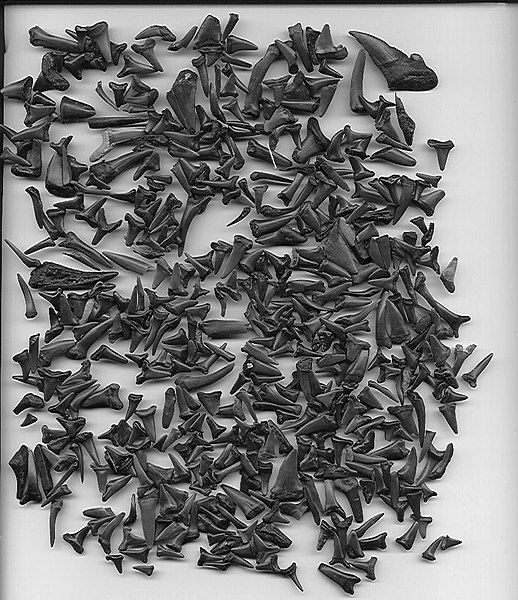Fossil collecting is the collection of fossils for scientific study, hobby, or profit. Fossil collecting, as practiced by amateurs, is the predecessor of modern paleontology and many still collect fossils and study fossils as amateurs. Professionals and amateurs alike collect fossils for their scientific value. A commercial trade in fossils has also long existed, with some of this being practised illegally.
Collecting fossilized shark's teeth is an easy way to begin collecting fossils. They are often found in abundance on public beaches. The teeth shown here were collected in Castle Hayne, North Carolina, and are from the Eocene and Cretaceous divisions.
College students collecting fossils as part of their invertebrate paleontology course. This is a roadside outcrop of Ordovician limestones and shales in southeastern Indiana.
Tarbosaurus and Saurolophus skeletons that were smuggled to the US, and subsequently returned to Mongolia, at Central Museum of Mongolian Dinosaurs
Mary Anning, a famous collector and seller of fossils
A quarry is a type of open-pit mine in which dimension stone, rock, construction aggregate, riprap, sand, gravel, or slate is excavated from the ground. The operation of quarries is regulated in some jurisdictions to manage their safety risks and reduce their environmental impact.
A quarry at Carrara in Tuscany, Italy
A Portland stone quarry on the Isle of Portland, England
An abandoned construction aggregate quarry near Adelaide, South Australia
An abandoned stone quarry in Kerala, India








